| Coccothrinax pumila | |
|---|---|
| Scientific classification | |
| Kingdom: | Plantae |
| Clade: | Tracheophytes |
| Clade: | Angiosperms |
| Clade: | Monocots |
| Clade: | Commelinids |
| Order: | Arecales |
| Family: | Arecaceae |
| Genus: | Coccothrinax |
| Species: | C. pumila |
| Binomial name | |
| Coccothrinax pumila | |
| Coccothrinax pumila | |
|---|---|
| Scientific classification | |
| Kingdom: | Plantae |
| Clade: | Tracheophytes |
| Clade: | Angiosperms |
| Clade: | Monocots |
| Clade: | Commelinids |
| Order: | Arecales |
| Family: | Arecaceae |
| Genus: | Coccothrinax |
| Species: | C. pumila |
| Binomial name | |
| Coccothrinax pumila | |
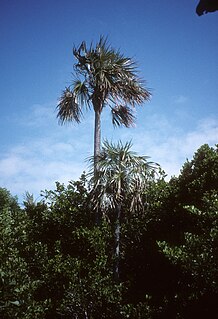
Coccothrinax is a genus of palms in the family Arecaceae. There are more than 50 species described in the genus, plus many synonyms and subspecies. A new species was described as recently as 2017. Many Coccothrinax produce thatch. In Spanish-speaking countries, guano is a common name applied to Coccothrinax palms. The species are native throughout the Caribbean, the Bahamas, extreme southern Florida and southeastern Mexico, but most of the species are known only from Cuba.
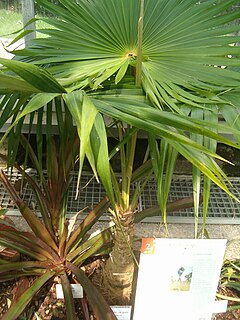
Coccothrinax alta is a palm which is native to Puerto Rico and the Virgin Islands. Like other members of the genus, C. alta is a fan palm. Trees are 2–6 m tall, with some individuals getting up to 11 m. Flowers are light yellow, and fruit are purple-black when ripe. It is found on lower elevations, but to 350 m above sea level.
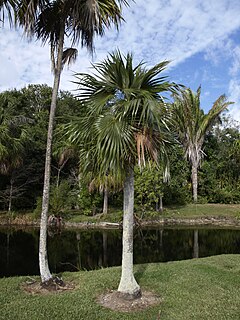
Coccothrinax readii, the Mexican silver palm, is a palm which is native to southeastern Mexico and northeastern Belize.
Coccothrinax munizii is a species of palm tree that is endemic to eastern Cuba. Like other members of the genus Coccothrinax, C. munizii is a fan palm. It grows on rocky hills or in dry scrub forest on limestone.
Coccothrinax camagueyana is a palm which is endemic to east central Cuba.
Coccothrinax fagildei or Fagilde's palm, is a palm which is endemic to Cuba.
Coccothrinax fragrans is a palm which is native to eastern Cuba and Hispaniola.
Coccothrinax gundlachii (yuraguana) is a palm which is endemic central and eastern Cuba.
Coccothrinax inaguensis, the thatch palm or Inagua silver palm, is a palm which is endemic to the Bahamas.
Coccothrinax microphylla is a palm which is endemic to eastern Cuba.
Coccothrinax miraguama is a palm which is endemic to Cuba.
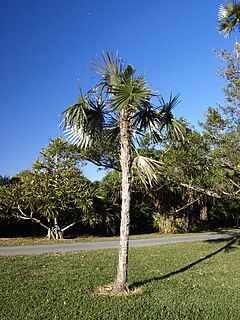
Coccothrinax salvatoris is a palm which is endemic to eastern and east central Cuba.
Coccothrinax saxicola is a palm which is endemic to eastern Cuba.
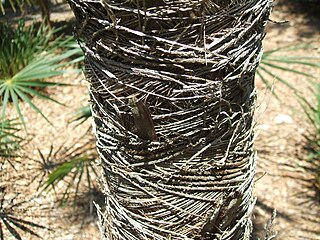
Coccothrinax scoparia is a palm which is endemic to Hispaniola.
Coccothrinax torrida is a palm endemic to southeastern Cuba. It is known from a single isolated hill on the coast of the Guantánamo Province. The climate of the area is described as semi-desert with 9 or 10 dry months. Like other members of the genus, C. torrida is a fan palm. Trees are single-stemmed, between 2 and 8 m tall with stems 2.5 to 3.9 cm in diameter. The fruit is creamy white, 4.8–6.3 mm in diameter.
Coccothrinax yunquensis, the yuruguana del Yunque, is a palm which is endemic to southern Cuba. It is reported to be restricted to El Yunque, a limestone mountain in Guantánamo Province.
The Siberian elm cultivar Ulmus pumila 'Aurea' was released by the Honze nursery in China shortly before the Beijing Olympics in 2008. Little information is currently (2008) available, and although the species is apparently U. pumila, it is advertised as a 'Chinese Elm', which is U. parvifolia.
The flora of the Dominican Republic is diverse.